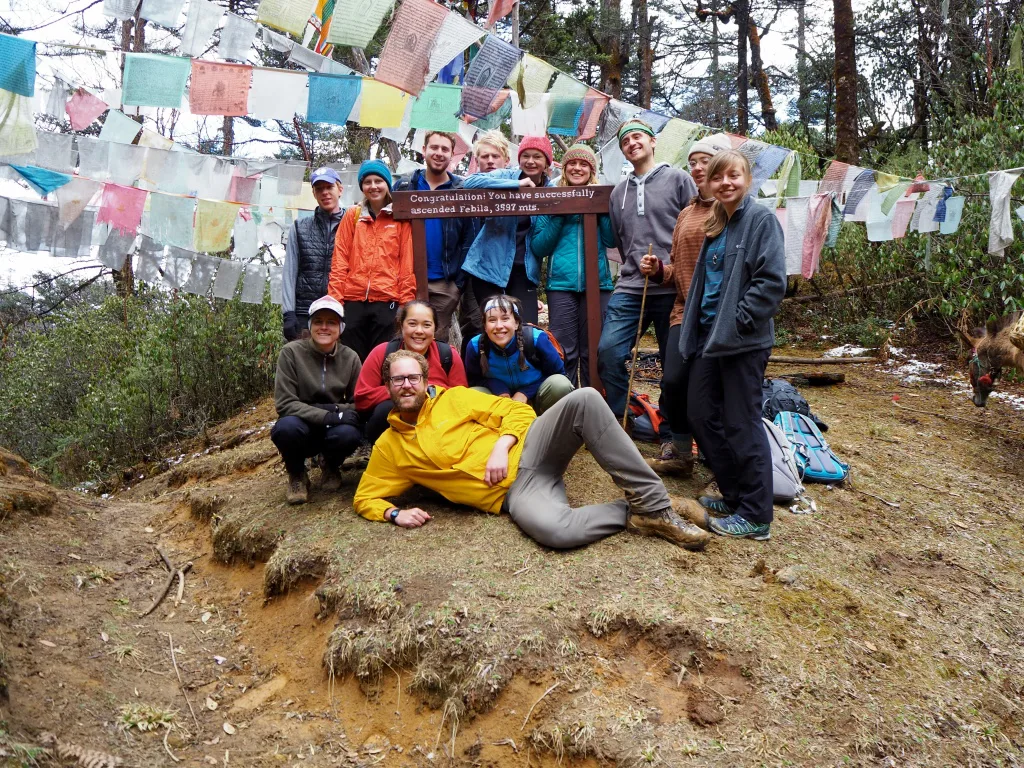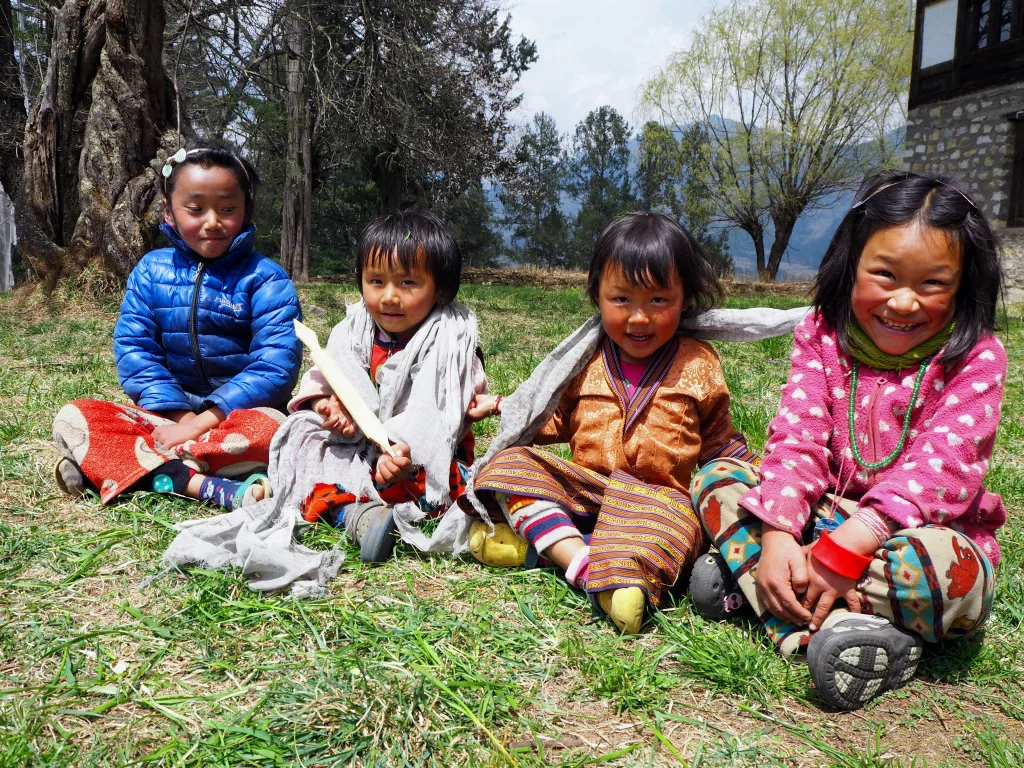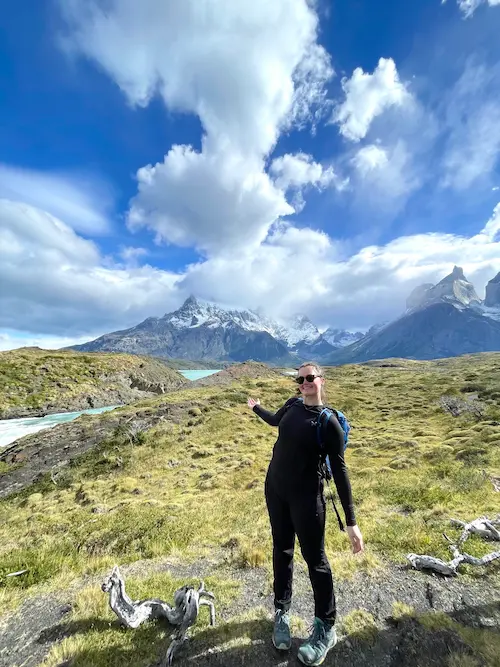Pilgrimage
The merry jingle of bells fills the air as a group of shaggy ponies heaves into view around the trail bend. An old man follows nudging them along with a stick, mumbling mantras to himself under towering spruce trees draped in long tendrils of moss. I feel like we’ve stumbled into some sort of Himalayan Canterbury tale, but in reality we’re in Central Bhutan, threading our way through the Bumthang Valley on a four day trekking pilgrimage.
The previous evening we shivered forlornly around a sputtering fire as cold rain pelted our campsite, but overnight the clouds lifted to reveal a glorious morning. Streaks of bright sun beam down through the forest canopy as we hopscotch over tumbling streams and under the gnarled branches of giant rhododendrum trees bursting with scarlet blooms.
Trekking ever upward, we leave footprints through a thin blanket of snow as we gain the 3,597 meter pass that connects the Chokhor and Tang Valleys. Breaking for lunch under a nest of brightly colored prayer flags that marks the passage, I’m reminded that trails like these have connected people in the mountains for centuries, facilitating the trade of goods and ideas across the Himalayas.

A portrait of the man who rented us his pack animals to carry our hot lunch of rice and local-caught fish to the top of the pass on day two of the trek

After a 1,000+ meter climb (at elevation, mind you) from the first campsite on the trek, students seem pleased that the rest of the day is a bit more easy-going
Today roads are slowly replacing the ancient footpaths that connect Bhutan’s rugged mountains. Cars connect families from distant parts of the Kingdom and trucks deliver goods from India to small shops in remote villages. However, not so long ago the only way to get around these mountains was by foot and great caravans of yaks, not trucks, once delivered goods to people overland from Tibet.
Bhutanese traders would take tobacco, English cloth, rice, paper and indigo to trade fairs over the border in Tibet, to return laden with bricks of Chinese tea, gold dust, salt and borax. To transport these commodities lumbering yak trains laden with goods were led to and fro over the mountains. Traders would even compete with one another for the most impressive caravans decking their animals out in fine costumes and bells that would clang loudly over the high Tibetan passes marking the caravans passage.
These days the only sounds we hear are the soft jingle of our pack ponies descending from the mountain as we gaze over the Tang Valley paying a visit to Ogyen Chholing Palace – a historic Bhutanese estate turned museum. Wandering the dimly lit halls I feel like we’re ‘time traveling’ back to a bygone era, observing artifacts from centuries past. The families who lived here must have once gazed out over the valley expectantly for the great yak trains, but today it is us who are the caravan as we steadily continue our pilgrimage.
As we continue down the valley, everywhere we look green things are erupting from the earth marking spring’s arrival. A mosaic of greens and browns carpet the valley, while green willow shoots and pink cherry blossoms frame the river-ways. New born calves suckle and song birds call out for mates. Local dogs either bark, or wag their tails and accompany us as we meander through this bucolic landscape of fields and villages. Like pied pipers, a menagerie of animals ranging from cows to dogs, cats and crows seem to follow us on our pilgrimage eager for company or a morsel of food.
There are many wild animals in these mountain valleys also, though they are so elusive the most we can do is read their signs. The muddy wallows of wild boars, the squeak of a pika or the fresh paw-prints of jungle cats along the path. Wherever we go though the calls of wild birds ring out across the canopy – Spotted Nutcrackers, Darjeeling Woodpeckers, Oriental Turtledoves, Green-tailed Sunbirds and many more flit and sing in the canopy. With such a range of elevational gradients and an abundance of pristine forests it is no wonder Bhutan is one of the most biodiverse places in the world for birdlife. Gathered around the fire on our last night we were even serenaded to sleep by the hooting of a Himalayan Wood Owl.
On our last day the route cuts along roads, old walking trails and bushy paths along valleys and ridge-lines. A breeze filled with the fragrance of fresh Blue Pine wafts across the valley as we descend from the hills to the end of our trail – the burning lake. It was here in the deep pool of this gorge that Pema Lingpa, one of Bhutan’s greatest local saints is said to have discovered ‘terma’, hidden treasures or teachings left by Guru Rinpoche long ago, ordained to be re-discovered by great masters. It is a place of miracles and a fitting endpoint to reflect on our pilgrimage over the past few days.
Getting ready for the long journey back to Paro later that evening, I reflected on the treasure trove of memories we all made on the trip. As I was folding up my clothes, I noticed everything smelled like campfire and farm animals. I closed my eyes and buried my face in a sweater and inhaled.

Warmed by a campfire on one of the brisk nights of the trek, students listen with intent as Dr. Purna regales the group with stories of local ghosts

Some children take rest from a rambunctious game of tag to pose for a photo before getting right back to running around
Related Posts


